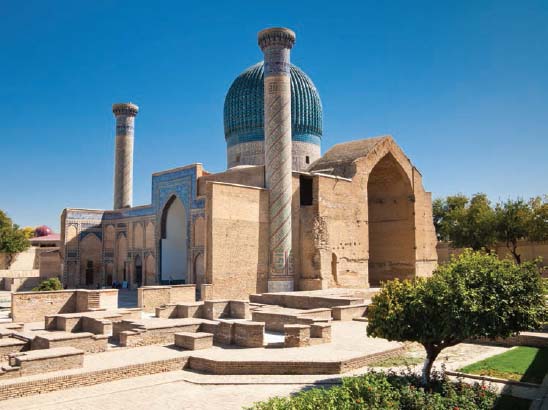The Early Modern World, C. 1300–1600Islamic Art and the Ottoman Empire |
Who was Suleiman the Magnificent? |
Suleiman I, known as Suleiman the Magnificent (1494–1566), ruled the Ottoman Empire from 1520 until his death. He was trained as a goldsmith and was a great patron of the arts. Under his rule, ceramics, calligraphy, manuscript illumination, met-alworking, textiles, and architecture flourished. Suleiman supported a royal painting society, the Naqashkhane, whose styles greatly influenced other artists throughout the Ottoman Empire. A good example of the Naqashkhane style is in their design for the Sultan’s imperial signature, known as a tughra. It features bold, sweeping lines and ornate organic decoration done in ink and watercolor on paper. It incorporates both abstract design and calligraphy, and includes the name of the Sultan as well as the phrase “the eternally victorious.”

The Gur-e-Amir, or “Tomb of the King” in English, is the mausoleum for the Asian ruler Tamerlane, in Samarkand, Uzbekistan, and an example of fifteenth-century Persian architecture.
